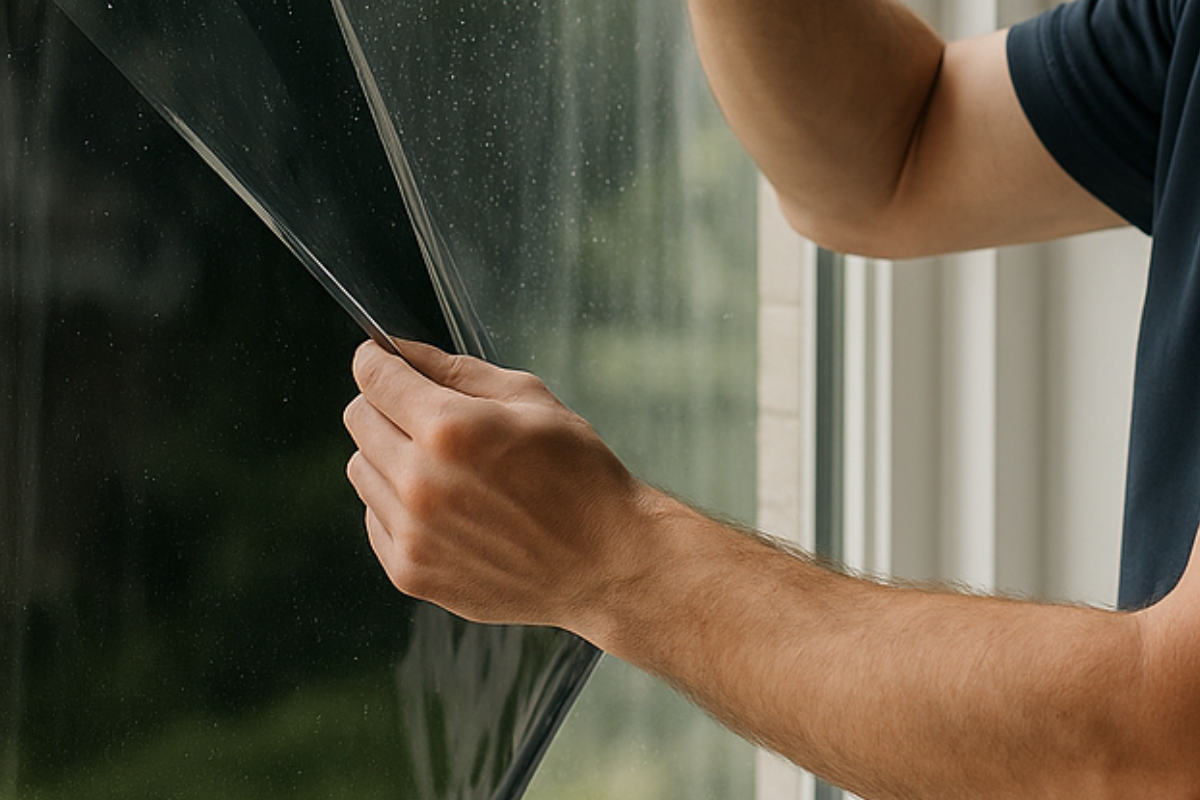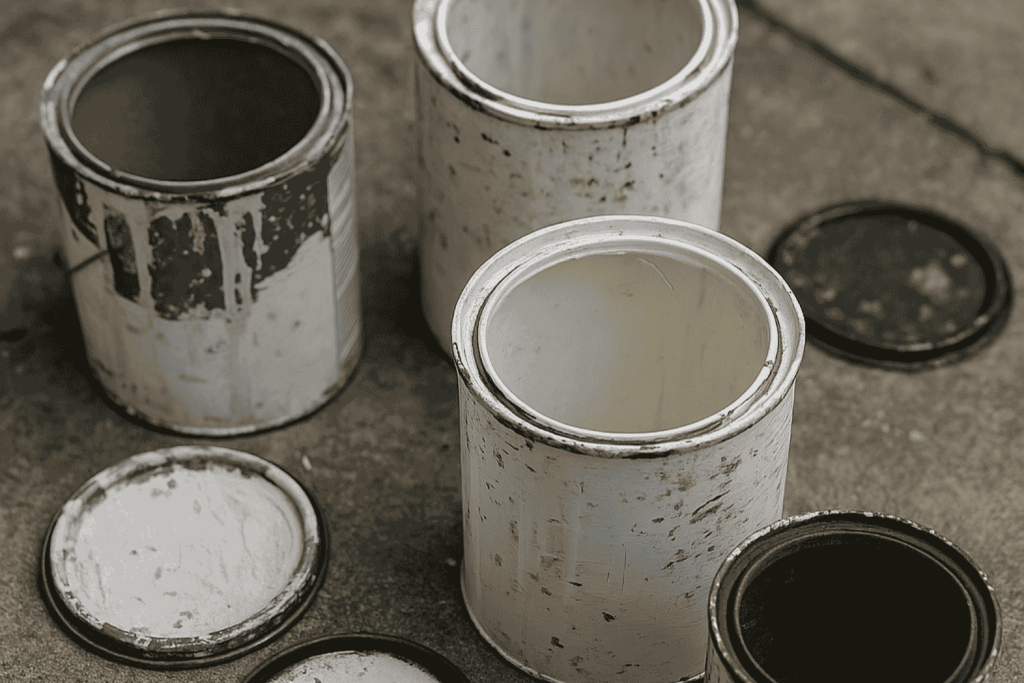Each year, millions of square feet of solar window film are installed in homes across the country, and with them, countless plastic liners are peeled off and discarded.
These liners, often made from polyethylene terephthalate (PET), may seem small, but when sent to landfills, they add up fast. Improper disposal contributes to plastic pollution and wastes valuable materials that could otherwise be reused.
Solar window film liners play a crucial role during installation, but once the film is applied, the liner becomes waste. Knowing how to recycle solar window film liners not only helps reduce environmental impact but also supports broader sustainability efforts in the building and solar industries.
Whether you’re managing a DIY project or working with professional home window tinting services, understanding what to do with the liner is an important part of responsible home improvement.
What Is a Solar Window Film Liner?
Solar window film liners are an essential component in the installation of solar control or energy-efficient window films. These liners are typically a clear plastic backing that protects the adhesive side of the film until it is ready to be applied to a window.
Material Composition and Function
Most solar film liners are made from PET, a strong and lightweight plastic also used in beverage bottles. PET is chosen for its clarity, durability, and ease of separation during installation. These liners may also include adhesive coatings and anti-scratch layers, depending on the product design.
Key materials in solar window film liners include:
- Polyethylene Terephthalate (PET): The primary plastic base
- Adhesive Layers: Used to bond the film to the glass surface
- Coatings: Such as UV inhibitors or scratch-resistant finishes
Role in Energy Efficiency and Protection
Although the liner itself does not remain on the window, it plays a critical role in ensuring the solar film is installed properly. Once applied, the film helps reduce solar heat gain, block UV rays, and protect interior furnishings from fading. Films with high recycled PET content also contribute to sustainability goals by reducing reliance on virgin plastic.
Why Recycling Solar Window Film Liners Matters
Pollution and Landfill Impact
Liners made from PET and coated with adhesives or specialty chemicals are not biodegradable. When discarded improperly, they contribute to long-term plastic pollution. Some films may also contain elements like cadmium in thin-film photovoltaic (PV) applications, which can pose health and environmental risks if leached into soil or water systems.
Resource Conservation
Recycling PET liners helps conserve raw materials. PET can be reused to make new window films, packaging, textiles, and other plastic products. This reduces the demand for petroleum-based virgin plastics and supports the principles of a circular economy.
How to Recycle Solar Window Film Liners
Step 1: Remove and Separate Materials
Start by carefully peeling the liner from the window film during installation. Avoid letting the liner contact dirt or moisture, which can make it harder to recycle. If the liner has adhesives or coatings, try to separate layers if feasible, although full separation often requires specialized processing.
Step 2: Identify Recyclable Components
The PET portion of the liner is typically recyclable. However, any attached adhesive or specialty coating may limit its acceptance at standard recycling centers. Check for recycling symbols or consult with the film manufacturer for more details on the liner’s composition.
Step 3: Use Designated Plastic Film Recycling Programs
Most curbside recycling programs do not accept plastic films. Instead, use programs that specialize in plastic film recycling. Visit PlasticFilmRecycling.org to find drop-off locations or mail-in programs that accept PET films and similar materials.
Always confirm the program’s accepted materials list before dropping off your liner waste.
Recycling After a Professional Home Window Tinting Job
Working With Certified Professionals
Many certified installers are familiar with sustainable practices and may already have systems in place to handle liner waste. They may partner with recycling centers or follow internal protocols to collect and divert liners from landfills.
Post-Installation Liner Disposal
After a professional home window tinting job, ask your installer what they do with the liner waste. In some cases, they may collect it for bulk recycling or direct you to suitable drop-off locations. This not only simplifies the process but ensures the material is handled appropriately.
Challenges in Recycling Solar Film Liners
Laminate Separation Complexity
Solar film liners are often laminated with adhesives or coatings that are difficult to separate from the PET base. This lamination makes it challenging to recycle the material using standard mechanical methods. Specialized processes such as thermal or chemical delamination are sometimes required to recover usable PET.
Need for Specialized Facilities
Not all recycling centers are equipped to handle laminated plastics or materials with potential hazardous components, such as cadmium in certain solar films. Facilities with chemical treatment capabilities can process these layers more effectively, but such centers are limited and may not be accessible in all regions.
Environmental and Economic Benefits of Recycling
Reduced Carbon Footprint and Emissions
Recycling PET uses significantly less energy than producing new plastic from raw materials. According to industry data, recycling one metric ton of glass or PET can reduce energy consumption by up to 30 percent and prevent over a ton of CO2 emissions.
Material Recovery Rates and Reuse
Advanced recycling methods can recover:
- ~90% of glass from laminated films
- ~95% of semiconductor materials such as cadmium and tellurium from thin-film PV layers
- 4–10% of plastics depending on the liner composition
- 1–5% of metals and other residual materials
Recovered PET can be reused in new window films, packaging, or textiles, supporting the lifecycle of sustainable materials.
Regulations and Safe Handling Practices
Hazardous Waste Classification
Some solar films, particularly those with photovoltaic properties, may contain elements like cadmium, which are regulated under hazardous waste laws. The U.S. Environmental Protection Agency (EPA) has guidelines for managing such materials safely to prevent environmental contamination.
Certified Recycling Compliance
Only certified recycling centers that comply with EPA or local environmental regulations should be used for processing solar film waste. These centers use secure methods to handle, transport, and recycle materials, minimizing risk to people and the planet.
Innovations and Industry Trends in Film Recycling
Advanced Recycling Techniques
Emerging technologies include:
- Solvent-based separation to isolate PET from adhesives
- AI-assisted sorting systems that improve the accuracy and speed of separating recyclable components
Such innovations promise to improve material recovery rates and reduce processing costs over time.
Sustainable Product Design
Manufacturers are increasingly designing solar window films with sustainability in mind. Trends include:
- Using recycled PET in the production of new liners
- Meeting eco-certifications like LEED or Clean Air Gold Standard
- Creating PVC-free and low-VOC products to reduce environmental impact
These advancements reflect a broader commitment to circular economy principles and responsible manufacturing.
Making Sustainable Choices With Solar Film Liners
Recycling solar window film liners helps reduce waste, conserve resources, and minimize environmental harm. These liners, though often overlooked, are part of a larger conversation about responsible building materials and sustainable renovation practices.



